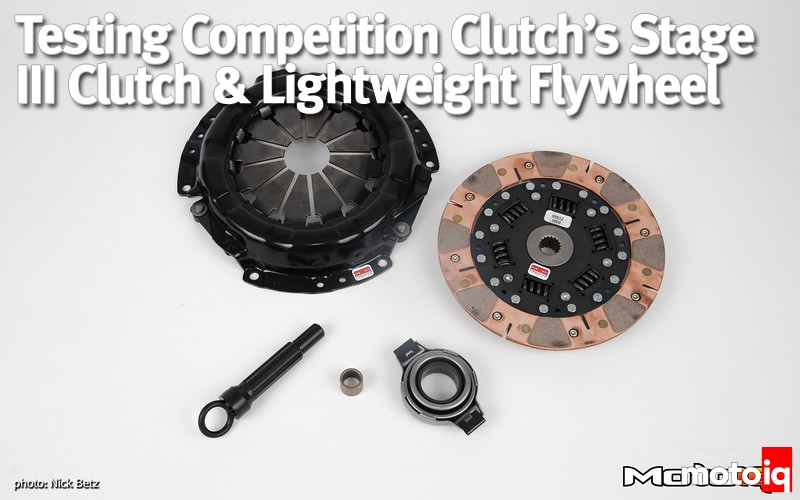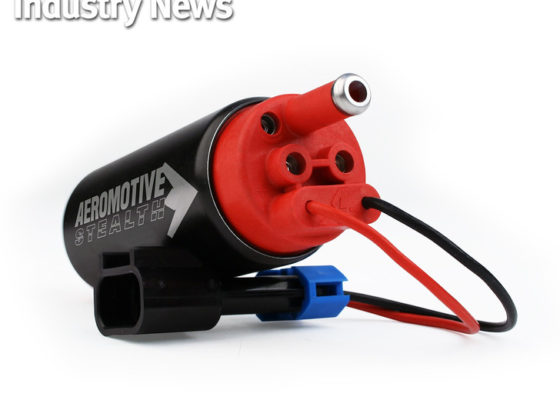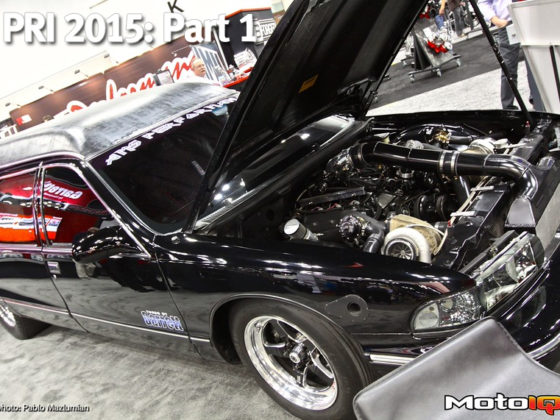
Testing Competition Clutch’s Stage III Clutch and Lightweight Flywheel
Of the cars we have around the palatial MotoIQ Megashop one of our daily drivers was in need of a clutch. The car is a B13 Sentra SE-R with a 200 whp SR20VE swap. This car is a workhorse, it is used as a daily commuter but it also sees a lot of track day use.
This sort of car is one of the hardest to select a clutch for. Clutches that can hold a decent level of power and are crisp shifting and easy on the syncros in track use are often hard to drive on the street, especially for daily driving in bumper to bumper traffic as is common in urban areas.
Lightweight discs with minimal engagement travel that gives syncros a lot of time and help a dog box slip into the next gear, usually are grabby with a lot of chatter on engagement from a stop. Add in a pressure plate with more clamping pressure and aggressive heat resisting friction material and things just get worse. A light flywheel aggravates things further still.
So to help us find the best compromise in a world that needs diametrically opposite characteristics, we asked Competition Clutch for some help. For our dual duty heavy use with track worthy holding power and crisp shifting with a heavy bias toward streetability in mind, they recommended their 2600 Series Stage III clutch and flywheel combination.
 The heart of any clutch and what controls a lot of its driving and performance characteristics is the clutch disc itself. Competition Clutch uses a full face sprung hub design that has 8 ceramic/metallic pucks bonded onto two copper discs. The hub of the disc is sprung which helps smooth engagement, cushion driveline shock and damp out driveline harmonics, to reduce NVH. Since the SE-R has a very weak transmission the spring hub is important to avoid driveline shock and potential transmission failure.
The heart of any clutch and what controls a lot of its driving and performance characteristics is the clutch disc itself. Competition Clutch uses a full face sprung hub design that has 8 ceramic/metallic pucks bonded onto two copper discs. The hub of the disc is sprung which helps smooth engagement, cushion driveline shock and damp out driveline harmonics, to reduce NVH. Since the SE-R has a very weak transmission the spring hub is important to avoid driveline shock and potential transmission failure. The thin black wavy thing that separates the two copper dics is the marcel spring. The marcel spring, give some squish to help ease the engagement as the pressure plate starts to clamp down when the clutch is released. This makes for a longer and easier to modulate pedal engagement. The copper discs that the pucks are bonded to serve has heat sinks to conduct heat away from the pucks and float on rivets that attach them to the marcel spring which attaches to the hub.
The thin black wavy thing that separates the two copper dics is the marcel spring. The marcel spring, give some squish to help ease the engagement as the pressure plate starts to clamp down when the clutch is released. This makes for a longer and easier to modulate pedal engagement. The copper discs that the pucks are bonded to serve has heat sinks to conduct heat away from the pucks and float on rivets that attach them to the marcel spring which attaches to the hub. The hub has travel limiting pins that the hub can bottom out on. Some clutches just bottom out on the hub springs. This tends to overstress the springs which can cause them to break and fall out. Broken springs can wedge into the pressure plate and disable the clutch completely.
The hub has travel limiting pins that the hub can bottom out on. Some clutches just bottom out on the hub springs. This tends to overstress the springs which can cause them to break and fall out. Broken springs can wedge into the pressure plate and disable the clutch completely. The Competition Clutch pressure plate has about a 50% increase in clamping force over the stock pressure plate. This greater clamping force, In conjunction with the new disc increases torque capacity by approximately 150% over stock. In the case of the SR20 Stage III application, the clutch can hold up to 500 lb ft of torque. That is pretty impressive considering it’s streetability!
The Competition Clutch pressure plate has about a 50% increase in clamping force over the stock pressure plate. This greater clamping force, In conjunction with the new disc increases torque capacity by approximately 150% over stock. In the case of the SR20 Stage III application, the clutch can hold up to 500 lb ft of torque. That is pretty impressive considering it’s streetability!


